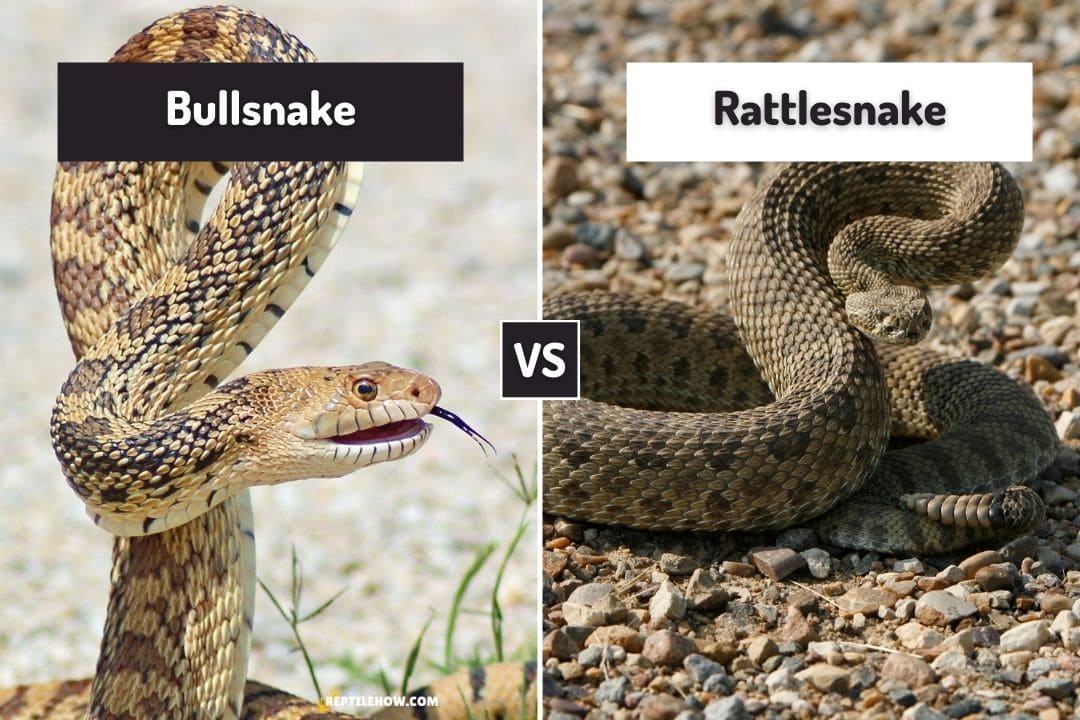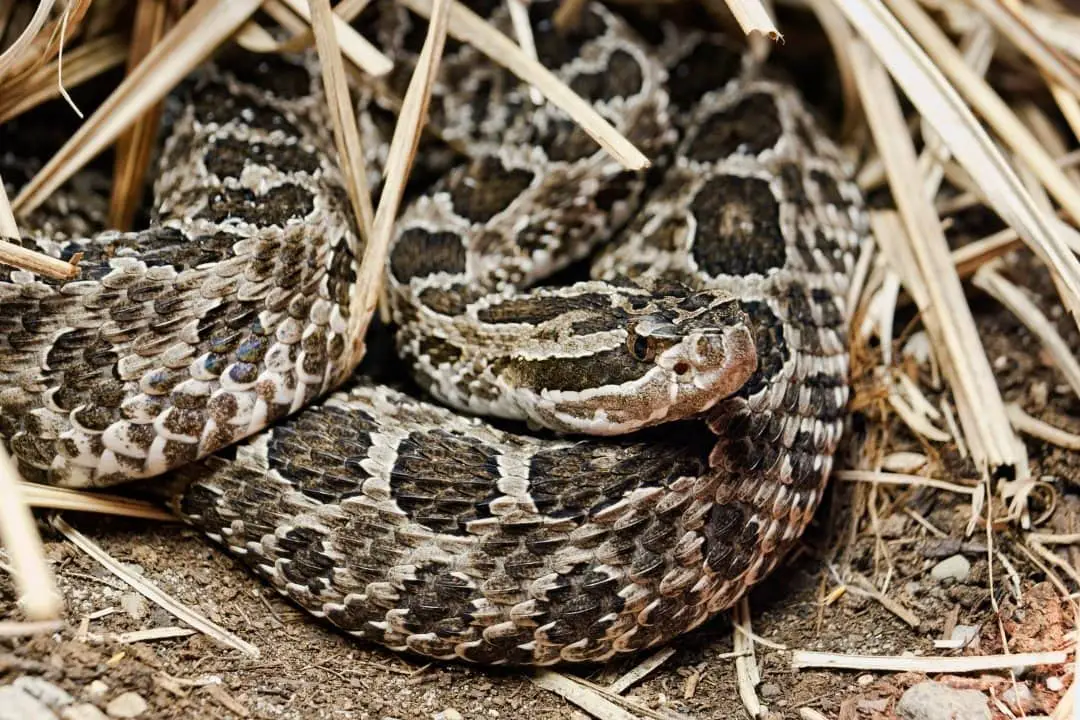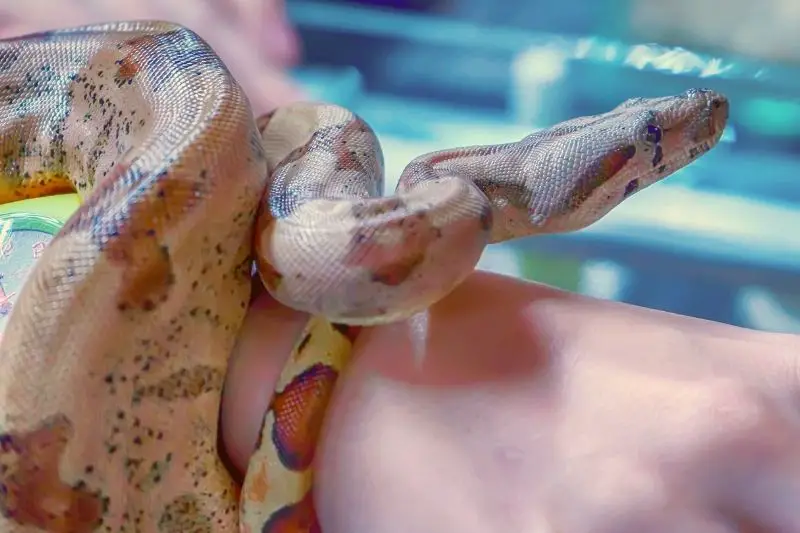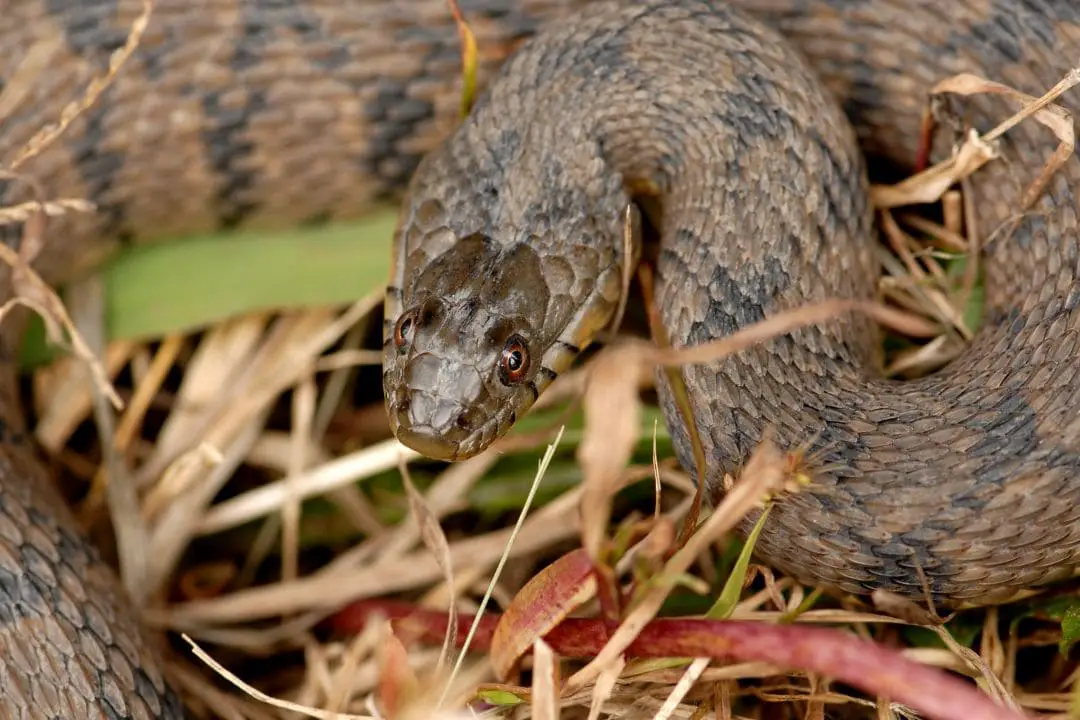Many harmless snake species can be confused with venomous snakes.
These cases of mistaken identity are typically on purpose since many nonvenomous snakes mimic venomous snakes to help them survive encounters with predators.
This can be very bad if the snake encounters a human since a harmless snake can be harmed or killed.
Bullsnakes (Pituophis catenifer sayi) are a nonvenomous subspecies of the gopher snake and are frequently confused for rattlesnakes that share their range thanks to a similar coloration and habitat.
This list will teach you about some differences so you can tell what snake you are looking at.
Please note that bullsnakes have a large range and share a habitat with several species of rattlesnake. Be sure to look at what snakes are native to your area to help identify your local snakes.
No matter what, do not kill a snake if you run into one. Trying to kill a venomous snake will get you bitten. If the snake isn’t venomous, you just killed an animal that posed no threat to you.
If you find a snake in your house, it is best to call a professional to remove it and release the wild snake safely.
1. Tails
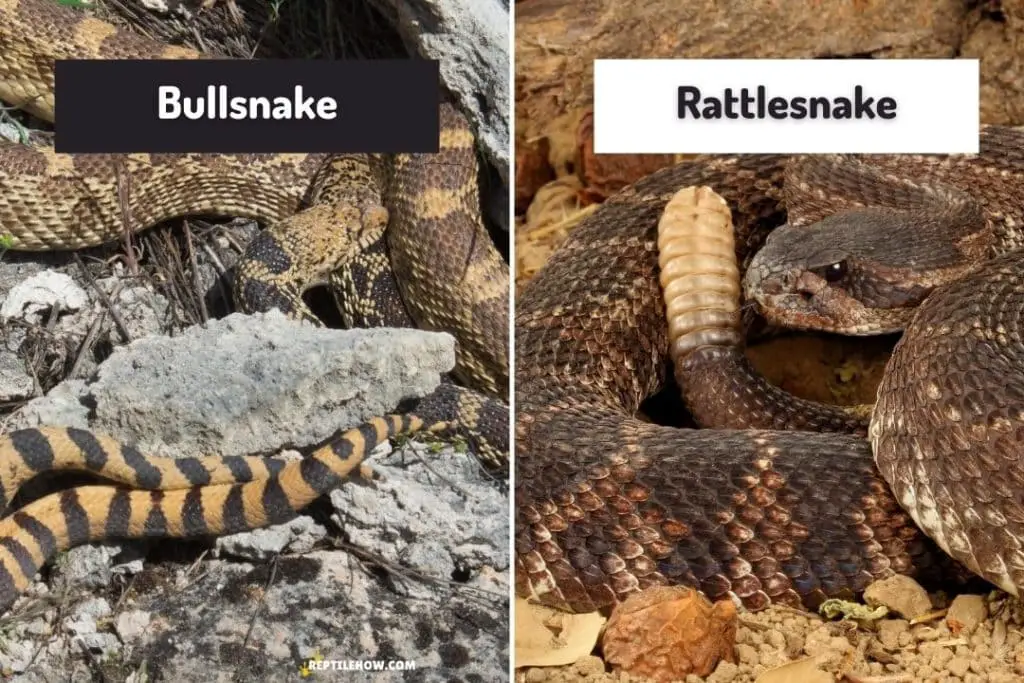
The single biggest tell between the two is the tail. All rattlesnakes have a rattle on the tip of the tail. The rattle of a rattlesnake is made of altered scales.
They are structures made of keratin that interlock. The rattlesnake produces the characteristic rattle by rapidly shaking the tip of the tail.
While many other snakes will shake their tail to scare off predators, they do not have the rattle and the sound will be different. The bullsnake does not have a rattle. Their tail is the same as the rest of the body and has the body color and pattern on it.
2. Head
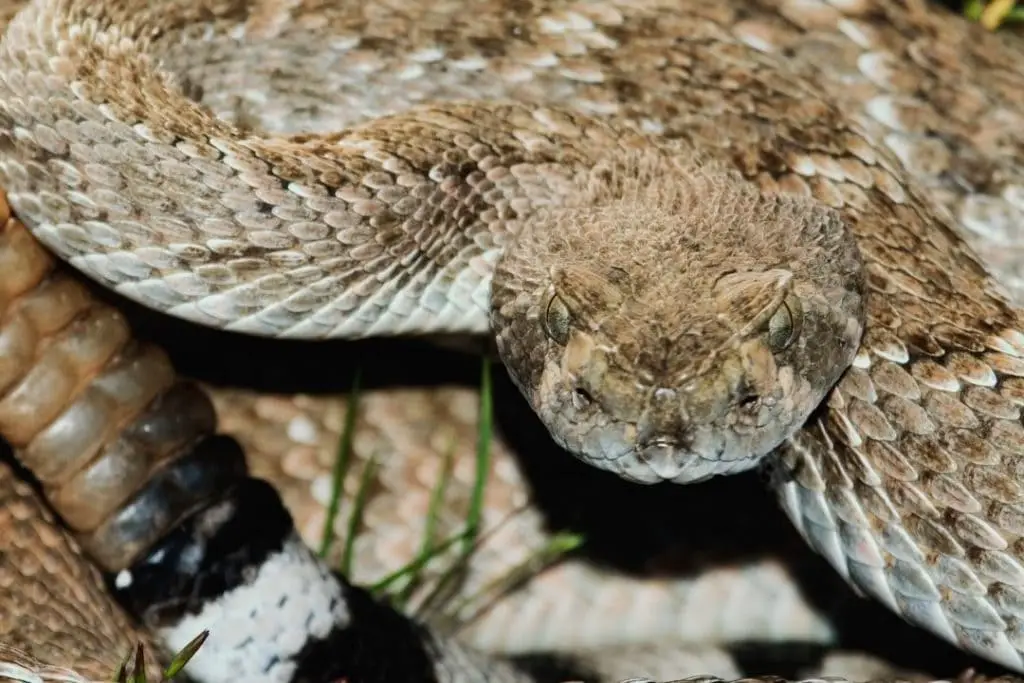
Rattlesnakes are considered pit vipers. This means they can sense heat and have pits on the face that allow them to sense differences in heat and easily locate prey.
Bullsnakes are colubrids and cannot sense heat. Rattlesnakes also have thick and blocky heads. Their heads are large and they have distinct necks.
Part of the reason they have such large heads is because of their venom glands. Bullsnakes have much smaller heads that blend into the rest of the body.
Bullsnakes will flatten their head and give them a more triangular shape when they are threatened. This is partly to try to confuse a predator and convince it they are venomous.
What they can’t do is make their head as blocky and thick as a rattlesnake. Their head is much thinner when flattened so you can help tell the two apart.
3. Eyes
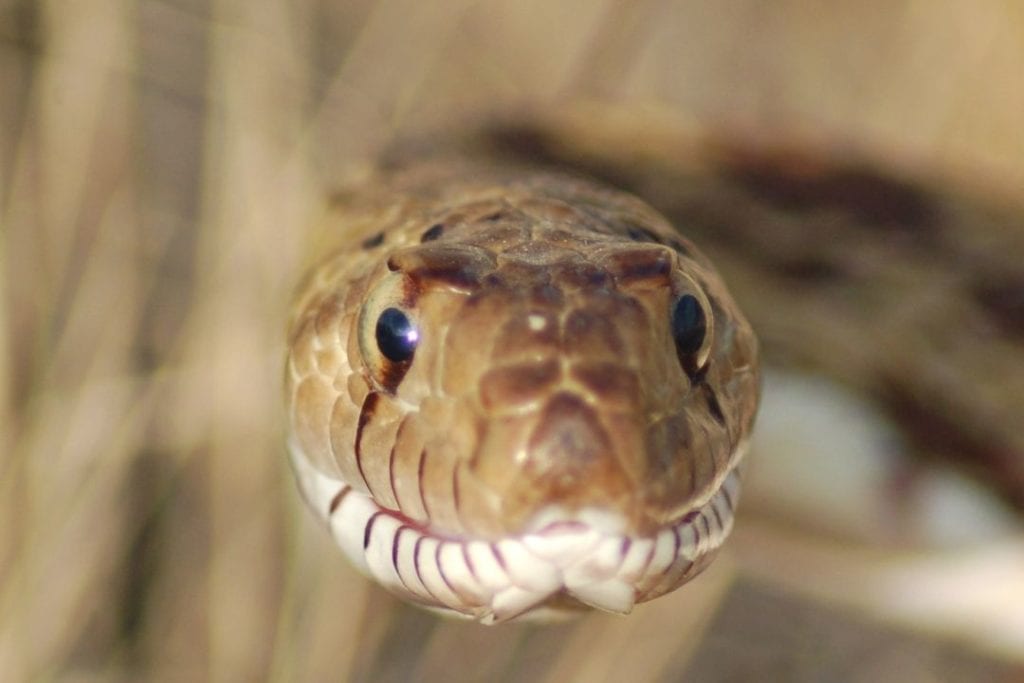
The eyes are another easy way to tell the two apart. Rattlesnakes have a scale above the eye that makes it impossible to see their eyes if you are directly above the snake.
Rattlesnakes also have elliptical pupils much like a cat. Bullsnakes have round pupils. Their eyes are typically visible from above.
4. Size

Bullsnakes are some of the largest snakes in the United States. They are typically 4-6 feet long but they can reach lengths of 8 feet. They are slender snakes like most other colubrids.
Rattlesnakes max out at 8 feet for the Eastern Diamondback (Crotalus adamanteus), but the most common species are much smaller.
These snakes are different from bullsnakes in their body type. Rattlesnakes are thick snakes that will weigh much more than a bullsnake that is the same length as them.
5. Habits
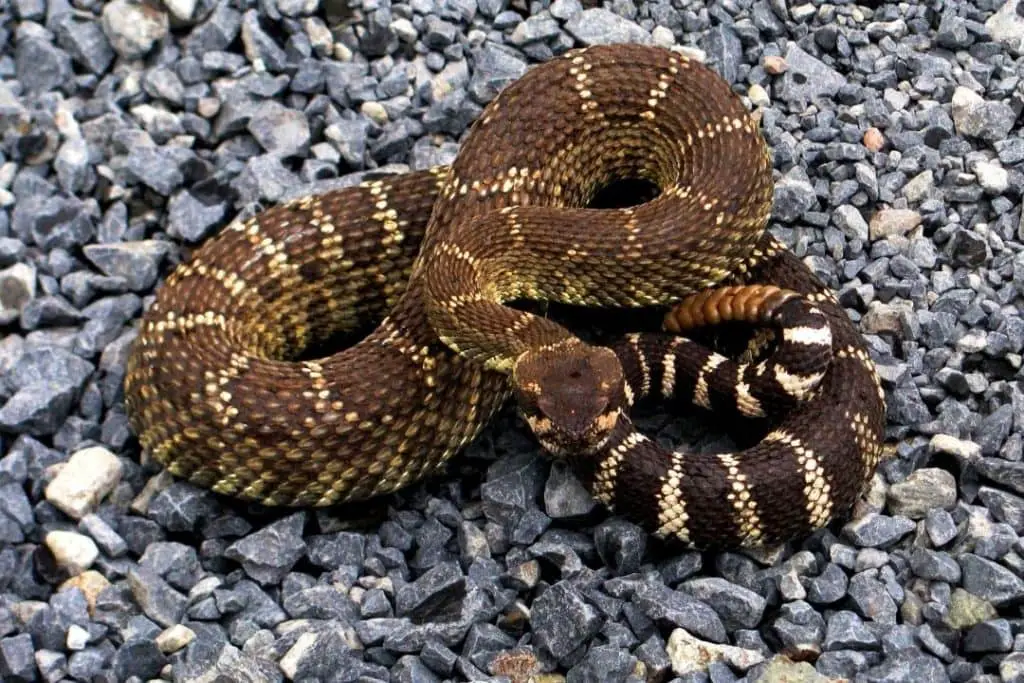
Bullsnakes are primarily diurnal snakes. They spend their days foraging for food. They are active hunters that hunt down their prey. Rattlesnakes are most active at night.
They are slow-moving ambush predators. They pick a spot and wait for their targetted prey item to come by. Rattlesnakes have a much wider diet on average than a bullsnake.
They will eat snakes, lizards, amphibians, and warm-blooded prey. They typically focus on a single species at a time. They kill by envenomating the prey item and then track it down as the venom takes effect.
Bullsnakes are constrictors that eat only warm-blooded prey like small mammals and birds. They are a bit more opportunistic feeders.
This means that they may at a whole nest of rodents at a time. Rattlesnakes need to eat less often than a bullsnake since snakes that use ambush hunting are adapted to go long times between meals.
Bullsnakes are also egg-laying snakes. They will dig out a hole and lay their eggs before covering it back up. Rattlesnakes are live-bearing animals. The female rattlesnake will carry her young until they are ready to be born.
6. Behavior
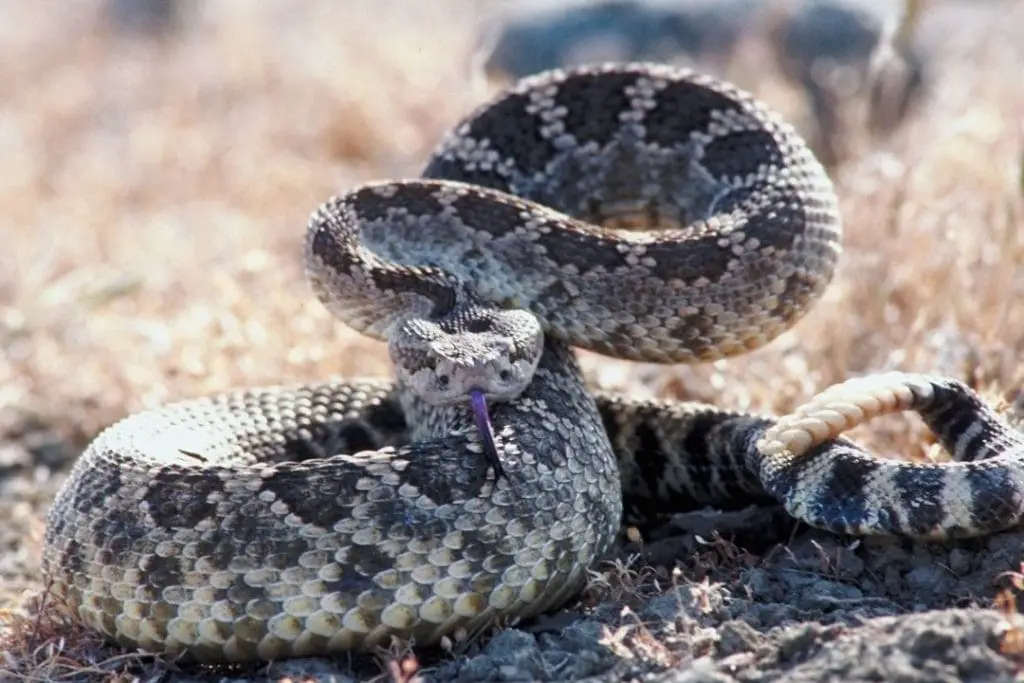
Behavior is a great guide to tell what a snake is. Rattlesnakes are slow-moving snakes that typically flee if they can see a human. They prefer staying out of open areas.
Generally, they will rattle to warn you that you are too close. If you get too close, they will bite.
One interesting thing about the pit vipers like rattlesnakes is that they can choose how much venom they inject. The amount they use if they are defending themselves will depend on the animal’s health and how they were approached.
A snake that is trying to warn off a human will rarely use much venom. They will use more venom if they are being seriously harassed or are injured.
If you step on a snake, it will likely use as much venom as it can spare. Bullsnakes are very different animals. They are much faster for one.
They prefer to run rather than stand their ground. Bullsnakes will also flatten their heads and strike more readily if they are bothered.
Venomous snakes are much more reluctant to bite humans than a typical nonvenomous snake. It is possible to find bullsnakes near rattlesnakes.
Bullsnakes in cold climates will frequently den with rattlesnakes to survive the winter.
Conclusion
Bullsnakes and rattlesnakes share the same habitats and prey in many cases. However, these snakes are active at different times so they rarely have to compete for resources.
Since they share a habitat, they can be confused. However, it is easy to tell them apart. If you are still confused, make sure you do not bother a snake.
A snake will only bite you if you bother it. The vast majority of rattlesnake bites are caused by people harassing or injuring the snake.
Always be careful in rattlesnake territory and be respectful of any wild snake you see. If you have any questions or comments, please leave them below.
